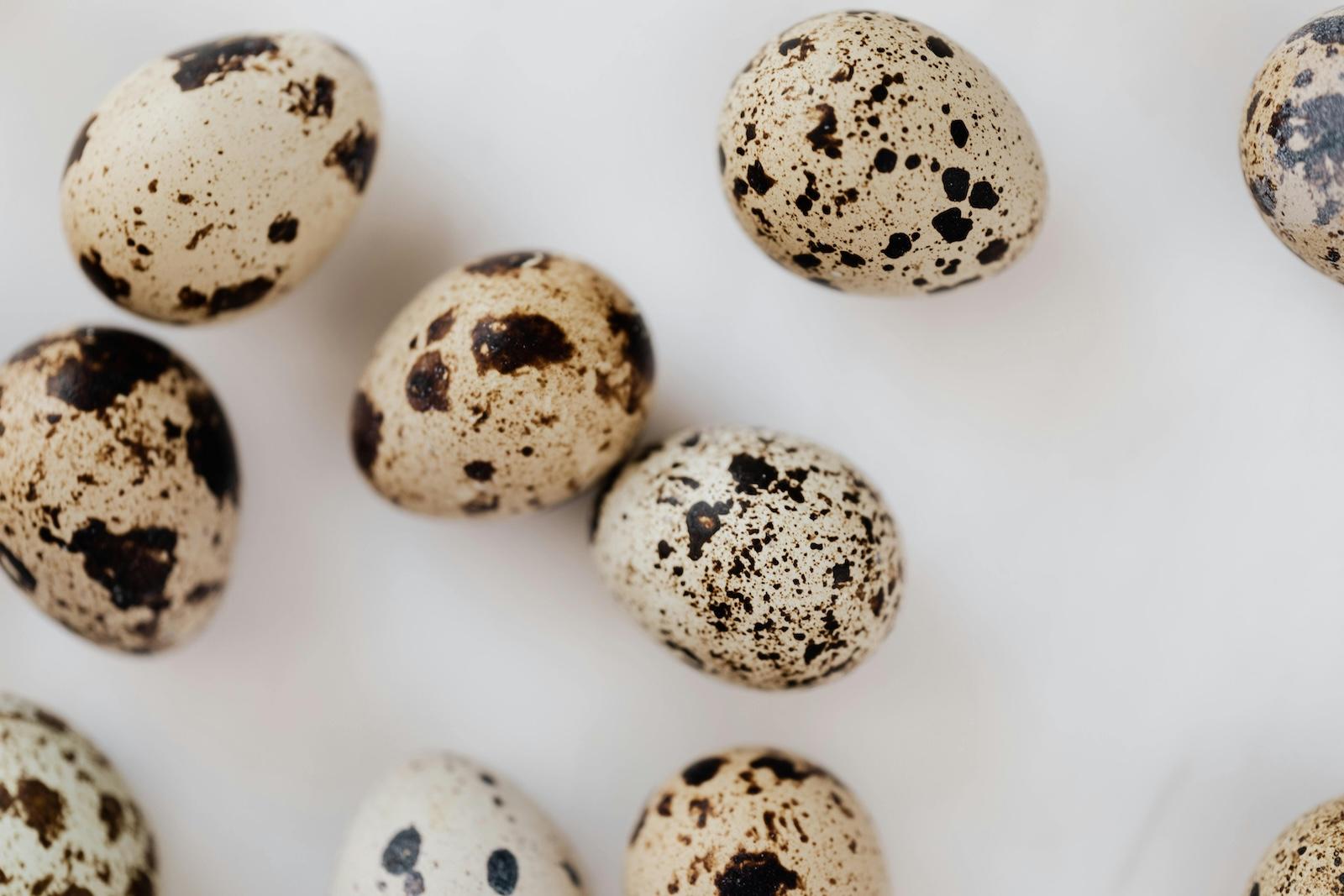Quail eggs might be tiny, but they require just as much attention as chicken eggs when it comes to handling and storage. Their thinner, more porous shells mean that how you collect, clean, and store them directly affects freshness and food safety (FDA, 2024). With a few consistent habits, you can safely enjoy your backyard flock’s eggs for weeks to come.
🧺 Step 1: Collect and Inspect Carefully
- Collect eggs at least twice a day, especially in warm weather (CDC, 2025).
- Brush off dry debris with a clean cloth or soft brush—avoid washing unless necessary.
- Discard any eggs that are cracked, thin-shelled, or heavily soiled.
- Keep a separate, clean container for collection to reduce contact with bedding or manure.
Why it matters: Cracks and manure contact can let Salmonella or other bacteria enter through the shell (FoodSafety.gov, 2024).
💧 Step 2: If You Wash, Do It Correctly
Unwashed eggs retain a natural protective coating called the bloom (or cuticle), which helps prevent bacteria from entering the shell (NC State Extension, 2023). If an egg is visibly dirty and must be washed, follow safe washing practices recommended by federal and extension specialists:
- Use potable water at least 20°F (≈10°C) warmer than the egg and ≥90°F (32°C).
- Add a food-grade sanitizer such as household bleach at ½ fl oz per gallon (≈1 Tbsp/gal) of water (USDA FSIS, 2024).
- Rinse quickly—do not soak eggs—and dry immediately with a clean towel.
- Refrigerate right away after washing (FDA, 2024).
🧊 Step 3: Refrigerate for Freshness & Safety
- Store at a consistent temperature of ≤40°F (4°C) for home use (FoodSafety.gov, 2024).
- Keep eggs in their original carton or covered container to reduce moisture loss.
- Place cartons in the main fridge compartment, not the door.
- Label each batch with the collection date to track freshness.
For those selling locally in Texas, eggs held for sale must be maintained at ≤45°F (7°C) under state guidance (Texas A&M AgriLife Extension, 2022).
🔥 Step 4: Cook Thoroughly —or Use Pasteurized Eggs
To destroy harmful bacteria, cook eggs until both the yolk and white are firm, or until mixed dishes reach an internal temperature of 160°F (71°C) (USDA FSIS, 2024). Recipes that use raw or lightly cooked eggs—such as homemade mayo or Caesar dressing—should use pasteurized shell eggs or pasteurized egg products (FDA, 2024).
🧼 Prevent Cross-Contamination
- Wash hands with warm, soapy water for 20 seconds after handling raw eggs (CDC, 2025).
- Use separate utensils and cutting boards for raw eggs and ready-to-eat foods.
- Refrigerate cooked egg dishes within 2 hours (1 hour if > 90°F) (FoodSafety.gov, 2024).
⚖️ Texas Notes for Small Producers
Backyard keepers in Texas can sell limited quantities of eggs directly if they follow safe handling and labeling standards under the Texas Egg Law and local health rules. The Texas A&M AgriLife Extension (2022) fact sheet provides full details. Even if you’re not selling, these same practices improve quality and safety at home.
❓ FAQ
Can I eat quail eggs raw?
No. Eating raw or undercooked eggs increases the risk of Salmonella infection (FDA, 2024). Use pasteurized eggs for any recipes calling for raw yolks or whites.
Do quail eggs need refrigeration?
Yes. In the U.S., both washed and unwashed eggs should be stored at ≤40°F (4°C) to limit bacterial growth (USDA FSIS, 2024).
How long do refrigerated quail eggs last?
For best quality, use within 3–5 weeks of the pack or collection date when continuously refrigerated (FoodSafety.gov, 2024).
🥚 Related Reading
- Are Quail Eggs Healthier Than Chicken Eggs? Here’s What the Science Says
- Thinking About Raising Quail? What to Know Before You Start
📚 References
- Food and Drug Administration (2024). What You Need to Know About Egg Safety.
- FoodSafety.gov (2024). Safe Minimum Internal Temperatures & Food Handling Basics.
- USDA Food Safety and Inspection Service (2024). Shell Eggs from Farm to Table.
- NC State Extension (2023). Tips for Egg Safety from Farm to Table.https://growingsmallfarms.ces.ncsu.edu/growingsmallfarms-eggsafetytips/
- Centers for Disease Control and Prevention (2025). Backyard Poultry — Healthy Pets, Healthy People.
- Texas A&M AgriLife Extension (2022). Selling Yard Eggs in Texas.





